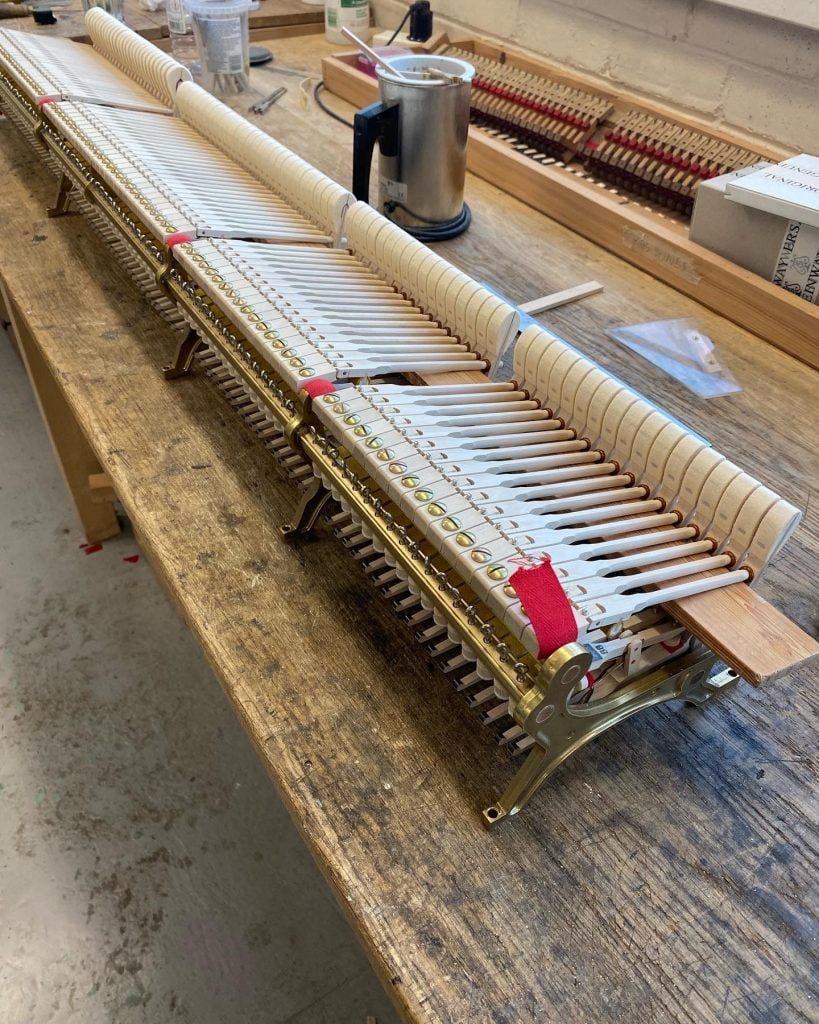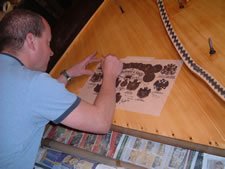The restoration process is a highly labour intensive operation, and the technical work alone can take around twenty or so days depending on the make of piano and extent of work required.
With a full interior Steinway rebuild, nothing will be left untouched. This includes unstringing and removing the iron frame and removing the action, keys and damper system. In the case of action parts, depending on the age and extent of wear, replacement is often the best option.
To restore a Steinway correctly and thoroughly requires advanced knowledge and technical skills specific to Steinway pianos alone. One example of this is the action frame, which is comprised of three rails, which if split (not an uncommon problem) must be replaced and accurately positioned to ensure good regulation is possible.
In Steinway grand pianos I now often recommend complete action replacement. I find that this gives the best and most durable results. I fit several per year and am always happy with the reaction from my clients…many have expressed that the results have far exceeded their expectations.
The damper system of a Steinway grand piano is also unique in design and again requires specialist knowledge when being serviced and refitted.
In all the work I do my preference is for Steinway original parts but this is not essential.
Once all the technical work is complete, the piano must then be tuned and toned (or voiced). This process may take a day or two and using a variety of techniques including lacquering, needling and shaping with sandpaper sticks to achieve uniformity of dynamics and brilliance.
Once back home a piano will take several months for tuning to stablise and may need occasional checks to see that everything is working correctly. It’s always a good idea to have the piano checked or serviced anually.
Assembling a Hamburg Steinway O grand action






Pianos, with use, require periodical servicing. Again, the amount of work required is dependent upon the amount the individual piano is being used.
For example, college pianos and pianos owned by professional pianists may be played perhaps ten or twelve hours a day and need regular close attention.
Servicing should address any issues which may detract from the performance or sound quality of a piano.
Hammers may need shaping or replacing if cut or old, indeed good hammers are very important for the sound quality of a piano as they can suffer over time with moisture and will lose their compression when they get older which will also effect the tone quality.
Any friction points in the keyboard or action should be checked for wear or hardness as these can slow down and affect the feel and responsiveness of a piano.
In a piano’s first few years, servicing may be minimal and will probably need little more than a tune, tone and check over. Then as it gets older, more work will be necessary. Again this is dependent on the usage, but it is a simple matter of wear and tear until eventually a piano will need to be rebuilt.

